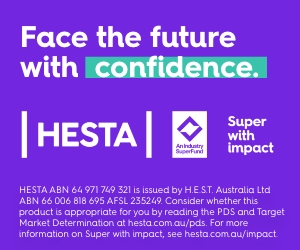Redeveloped targets to eliminate the gap outcomes between Indigenous and non-Indigenous Australians are in the pipeline, according to Australia’s Prime Minister Scott Morrison.
The government have indicated that the new targets will focus on education.
While the 2019 Closing the Gap report highlighted some success, the refreshed targets were an opportunity to accelerate progress, Mr Morrison said.
“With only two of the seven Closing the Gap targets on track to be met, it’s time to refresh what we’re doing.
“The original targets were well intentioned but were developed without collaboration and accountability for states and territories and without input from Indigenous Australians.”
The targets will be redeveloped in partnership with Aboriginal and Torres Strait Islander Australians and will focus on education as a key area to drive generational change.
“Education is the key to skills, to better health, to jobs,” Mr Morrison said.
With a focus on education, a new suite of initiatives were announced by the Prime Minister.
The package includes:
Teacher boost for remote Australia: Removing all or part of the HELP debt for 3,100 students to encourage more teachers to work and stay working in very remote areas
Youth Education Package: $200 million extra support to give more Indigenous students the support and mentoring they need through their secondary studies
Getting kids to school: Working community by community and school by school to invest $5 million in remote and very remote areas for projects that support and promote school attendance
The Council of Australian Governments (COAG) announced the agreement for Closing the Gap Refresh late last year.
Following that announcement the National Aboriginal Community Controlled Health Organisation (NACCHO) welcomed the formal full partnership approach to the Closing the Gap Refresh.
The organisation along with other Aboriginal and Torres Strait Islander peak bodies across Australia had been tirelessly campaigning to the partnership approach between Indigenous people and governments to agree to Closing the Gap framework.
“COAG’s commitment to a genuine formal partnership approach between the government and Aboriginal and Torres Strait Islander peoples on the Closing the Gap strategy is a welcome step in the right direction,” NACCHO Chief Executive Pat Turner AM said.
“This is something that we’ve long campaigned for – because involving Aboriginal and Torres Strait Islander people in decisions that affect their lives will lead to far better outcomes.
“We as a sector are looking forward to working with the Prime Minister and COAG to negotiate and agree to the refreshed framework, targets and action plans which will be finalised through the committee by mid-2019.
“We are pleased that the Prime Minister and COAG have finally recognised that Aboriginal and Torres Strait Islander people must play an integral part in the making of the decisions that affect their lives – and it’s the only way forward to closing the gap.”
The Close the Gap Campaign welcomed the Prime Minister’s commitment to work in genuine partnership with Aboriginal and Torres Strait Islander peoples to address the inequality that continues to exist in life expectancy and other outcomes.
“This partnership really does have the potential to be a game changer. It means active participation in decisions about matters that affect us. It will allow the voices of Indigenous Australians at community, local and national levels to be heard,” said the Co-Chairs of the Close the Gap Campaign, the Aboriginal and Torres Strait Islander Social Justice Commissioner June Oscar AO and the Co-Chair of the National Congress of Australia’s First Peoples Rod Little.
“We also commend the Opposition Leader Bill Shorten for his strong response and commitment to Indigenous Australians. This important strategy needs bi-partisan support.
“Indigenous involvement and participation in this important national strategy is vital. It really is the only way forward, because we know that when Aboriginal and Torres Strait Islander peoples are included in the design and delivery of services that impact their lives, the outcomes are far better.”








